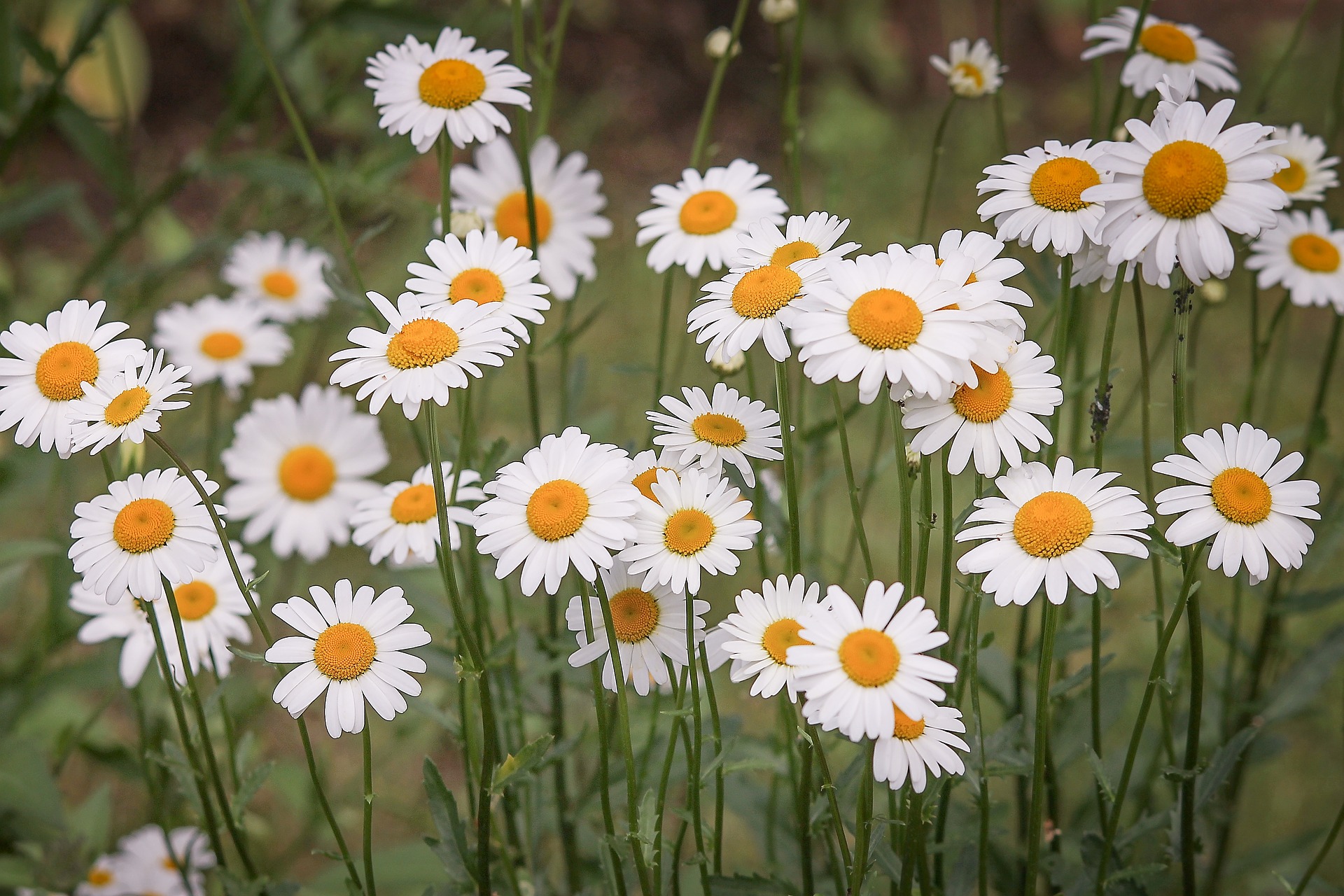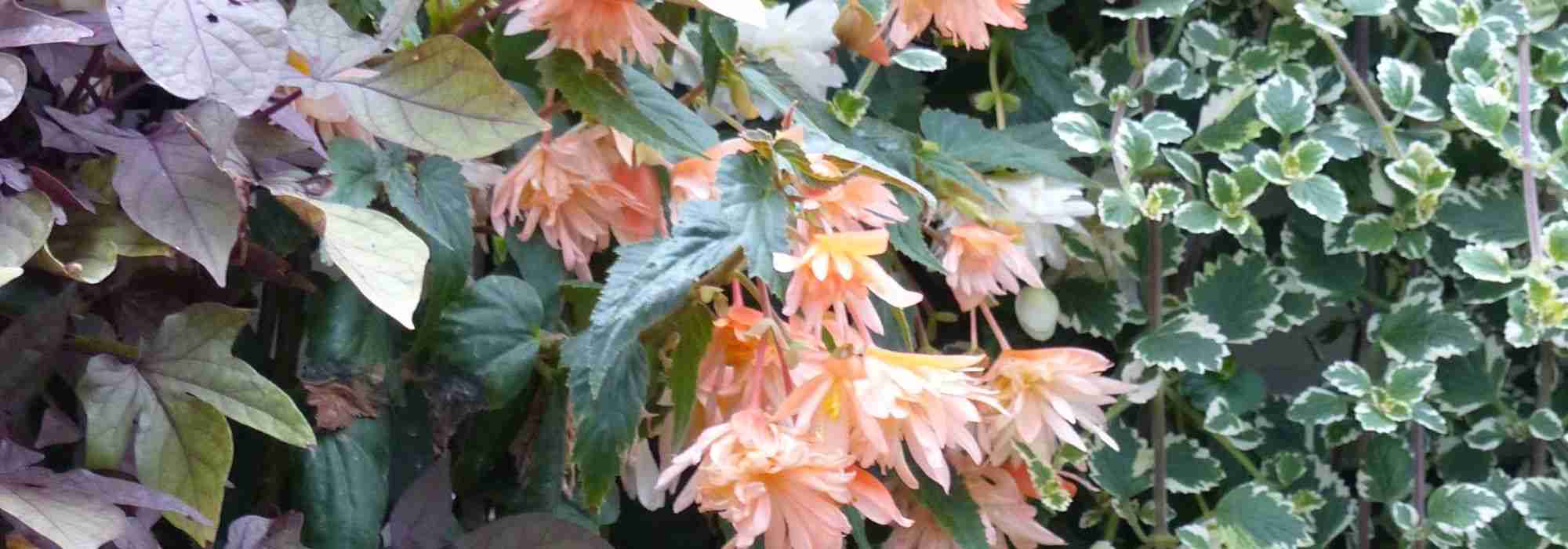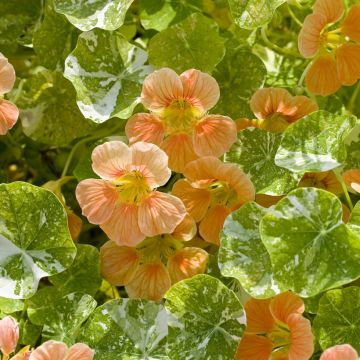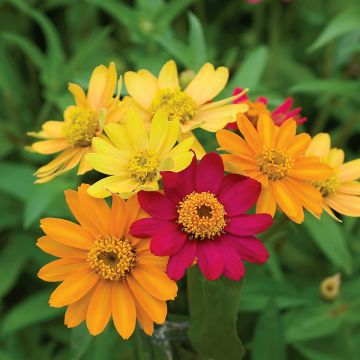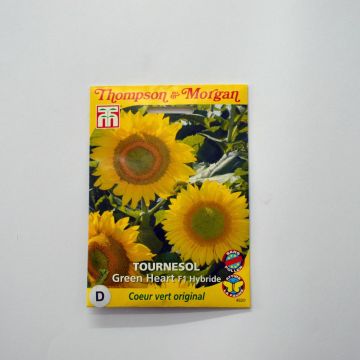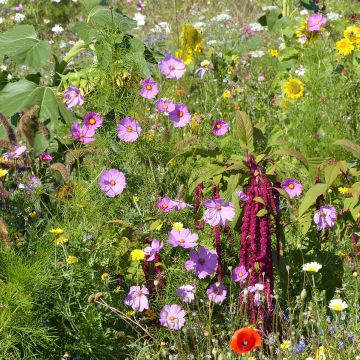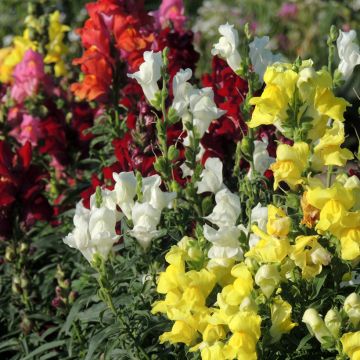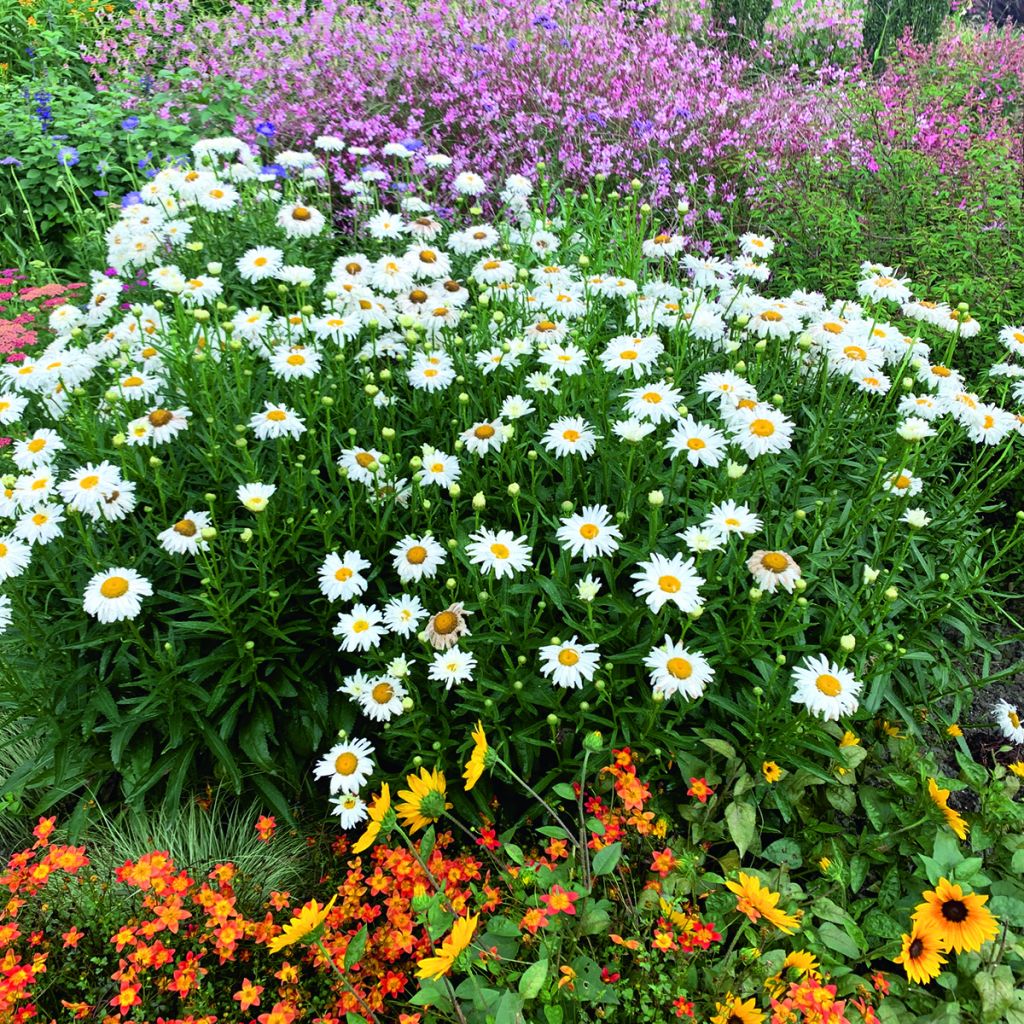

Leucanthemum x superbum Crazy Daisy - Marguerite des jardins Crazy Daisy, Leucanthème Crazy Daisy, Grande marguerite Crazy Daisy
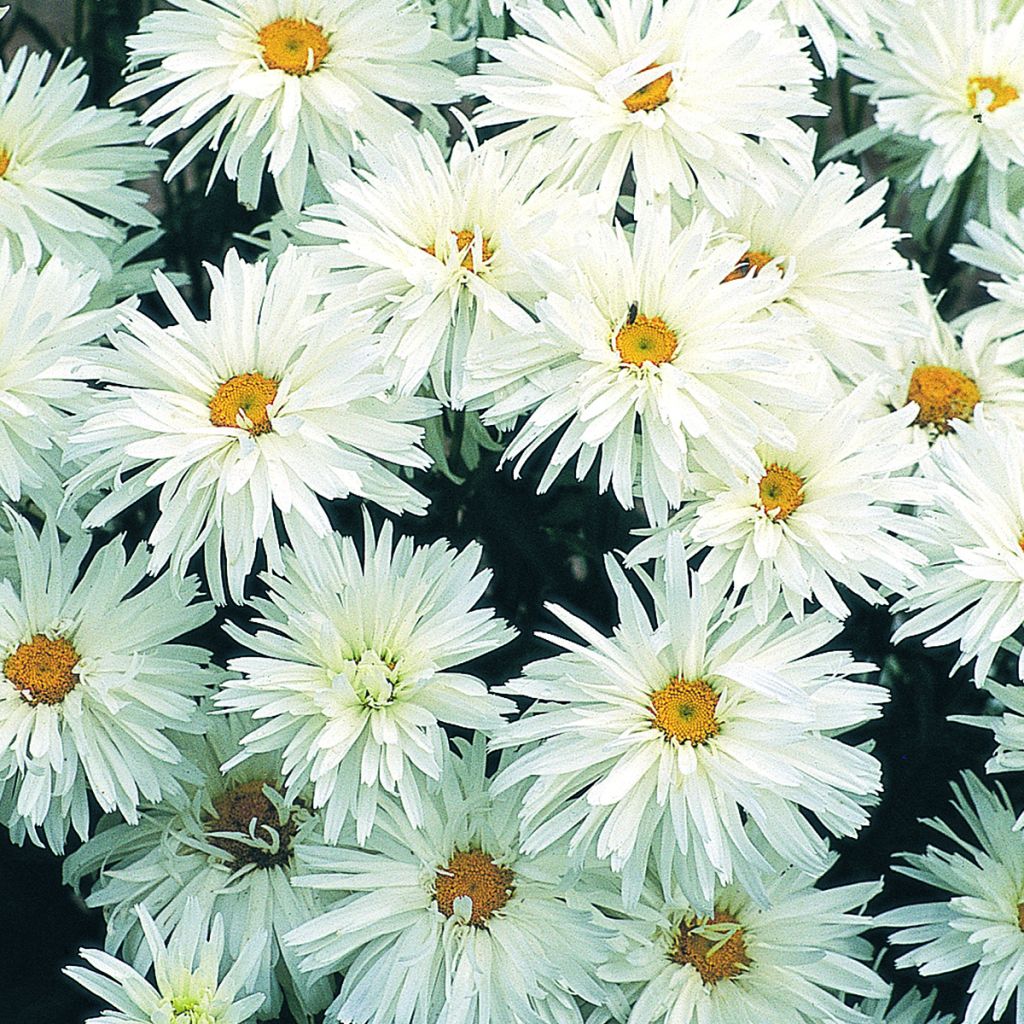

Leucanthemum x superbum Crazy Daisy - Marguerite des jardins Crazy Daisy, Leucanthème Crazy Daisy, Grande marguerite Crazy Daisy
Shasta Daisy Crazy Daisy seeds - Leucanthemum x superbum
Leucanthemum x superbum Crazy Daisy
Shasta Daisy
Special offer!
Receive a €20 voucher for any order over €90 (excluding delivery costs, credit notes, and plastic-free options)!
1- Add your favorite plants to your cart.
2- Once you have reached €90, confirm your order (you can even choose the delivery date!).
3- As soon as your order is shipped, you will receive an email containing your voucher code, valid for 3 months (90 days).
Your voucher is unique and can only be used once, for any order with a minimum value of €20, excluding delivery costs.
Can be combined with other current offers, non-divisible and non-refundable.
Home or relay delivery (depending on size and destination)
Schedule delivery date,
and select date in basket
This plant carries a 6 months recovery warranty
More information
We guarantee the quality of our plants for a full growing cycle, and will replace at our expense any plant that fails to recover under normal climatic and planting conditions.
Would this plant suit my garden?
Set up your Plantfit profile →
Description
Our Crazy Daisy Shasta Daisy Seeds or Leucanthemum x superbum will enable you to easily grow this robust ornamental perennial, perfect for brightening summer borders. Its upright, bushy habit bears sturdy stems topped with double flowers with bright yellow centres, edged with slender, curled white petals, adding a touch of rural fun. Very hardy, it prefers well-drained soil and a sunny position. It is suitable for growing both in open ground, to structure a flowering border, and in pots on a patio. To prevent it from drooping in rain or wind, light staking may be useful in exposed areas.
The Leucanthemum × superbum 'Crazy Daisy' is a horticultural cultivar belonging to the Asteraceae family, resulting from complex cross-breeding between several European and Asian species, notably Leucanthemum vulgare, Leucanthemum maximum, Leucanthemum lacustre and Nipponanthemum nipponicum, carried out by Luther Burbank in the late 19th century. It is also found under the botanical synonym Chrysanthemum 'Crazy Daisy' and the common names Shasta Daisy, Leucanthemum. This cultivar is distinguished by its double inflorescences with fringed and twisted white petals surrounding a central yellow disc, giving the plant a unique, tousled appearance. Its habit is erect and bushy with moderate growth, typically reaching 60 to 75 cm in height with a spread of 45 to 60 cm in open ground, and slightly more compact in pots. The stems are robust, slightly pubescent, supporting the weight of the flowers well without requiring staking. The deciduous foliage is formed of dark green lanceolate leaves with dentate margins, arranged alternately along the stems. Flowering extends from June to September, attracting many pollinators such as bees and butterflies. The fruits are dry, inedible achenes, containing seeds that can be used for propagation. The root system is fasciculate, promoting good establishment without being invasive.
With its fringed white corollas, the Shasta Daisy 'Crazy Daisy' brings an almost playful lightness to the garden, as if a summer breeze had tousled its petals. It pairs wonderfully in a naturalistic garden, planted en masse to structure a bed, or in small numbers along a borde, where it will prolong spring flowering. To complement its bright splendour, pair it with the soft tones of Phlox paniculata ‘David’, with summer asters, Chinese peonies or with coneflowers.
Shasta Daisy Crazy Daisy seeds - Leucanthemum x superbum in pictures


Flowering
Foliage
Plant habit
Botanical data
Leucanthemum
x superbum
Crazy Daisy
Asteraceae
Shasta Daisy
Chrysanthemum 'Crazy Daisy'
Cultivar or hybrid
Planting and care
Sowing:
Sow the Shasta Daisy 'Crazy Daisy' from late winter to late spring (February to May) or from late summer to autumn (August to October).
Sow indoors in pots or trays containing a peaty compost, at a temperature of 13 to 16°C. Barely cover the seeds with vermiculite or sieved compost as the seeds need light to germinate. The compost should be kept moist but not waterlogged. Germination should occur within 21 to 28 days.
If there is no germination, or if emergence is poor, move the seedlings to a cold area, at 4°C (in the refrigerator) for two to four weeks, then return them to full light and a higher temperature. This will stimulate emergence, as the seeds require vernalisation to inhibit their dormancy. Emergence will occur after this 'warm-cold-warm' alternating period.
Prick out into 7.5 cm pots when the seedlings have developed 2 leaves and are easy to handle. Gradually acclimatise them to outdoor conditions over 10 to 15 days before planting.
Choose a sunny, well-drained spot to optimise plant growth. Shasta Daisies tolerate some shade, but they will be less floriferous there. Space the plants 70 cm apart.
Cultivation:
Plant this daisy in deep, loose, cool, or even occasionally dry, well-drained soil. This plant tolerates limestone. It thrives in sunny positions, or at a push, partial shade. It withstands temperatures down to -20°C. Regularly remove any faded flowers and clear the plant of any dead foliage in spring. This daisy can be attacked by aphids, snails and may develop foliar spots.
Sowing period
Intended location
Planting & care advice
This item has not been reviewed yet - be the first to leave a review about it.
Similar products
Haven't found what you were looking for?
Hardiness is the lowest winter temperature a plant can endure without suffering serious damage or even dying. However, hardiness is affected by location (a sheltered area, such as a patio), protection (winter cover) and soil type (hardiness is improved by well-drained soil).

Photo Sharing Terms & Conditions
In order to encourage gardeners to interact and share their experiences, Promesse de fleurs offers various media enabling content to be uploaded onto its Site - in particular via the ‘Photo sharing’ module.
The User agrees to refrain from:
- Posting any content that is illegal, prejudicial, insulting, racist, inciteful to hatred, revisionist, contrary to public decency, that infringes on privacy or on the privacy rights of third parties, in particular the publicity rights of persons and goods, intellectual property rights, or the right to privacy.
- Submitting content on behalf of a third party;
- Impersonate the identity of a third party and/or publish any personal information about a third party;
In general, the User undertakes to refrain from any unethical behaviour.
All Content (in particular text, comments, files, images, photos, videos, creative works, etc.), which may be subject to property or intellectual property rights, image or other private rights, shall remain the property of the User, subject to the limited rights granted by the terms of the licence granted by Promesse de fleurs as stated below. Users are at liberty to publish or not to publish such Content on the Site, notably via the ‘Photo Sharing’ facility, and accept that this Content shall be made public and freely accessible, notably on the Internet.
Users further acknowledge, undertake to have ,and guarantee that they hold all necessary rights and permissions to publish such material on the Site, in particular with regard to the legislation in force pertaining to any privacy, property, intellectual property, image, or contractual rights, or rights of any other nature. By publishing such Content on the Site, Users acknowledge accepting full liability as publishers of the Content within the meaning of the law, and grant Promesse de fleurs, free of charge, an inclusive, worldwide licence for the said Content for the entire duration of its publication, including all reproduction, representation, up/downloading, displaying, performing, transmission, and storage rights.
Users also grant permission for their name to be linked to the Content and accept that this link may not always be made available.
By engaging in posting material, Users consent to their Content becoming automatically accessible on the Internet, in particular on other sites and/or blogs and/or web pages of the Promesse de fleurs site, including in particular social pages and the Promesse de fleurs catalogue.
Users may secure the removal of entrusted content free of charge by issuing a simple request via our contact form.
The flowering period indicated on our website applies to countries and regions located in USDA zone 8 (France, the United Kingdom, Ireland, the Netherlands, etc.)
It will vary according to where you live:
- In zones 9 to 10 (Italy, Spain, Greece, etc.), flowering will occur about 2 to 4 weeks earlier.
- In zones 6 to 7 (Germany, Poland, Slovenia, and lower mountainous regions), flowering will be delayed by 2 to 3 weeks.
- In zone 5 (Central Europe, Scandinavia), blooming will be delayed by 3 to 5 weeks.
In temperate climates, pruning of spring-flowering shrubs (forsythia, spireas, etc.) should be done just after flowering.
Pruning of summer-flowering shrubs (Indian Lilac, Perovskia, etc.) can be done in winter or spring.
In cold regions as well as with frost-sensitive plants, avoid pruning too early when severe frosts may still occur.
The planting period indicated on our website applies to countries and regions located in USDA zone 8 (France, United Kingdom, Ireland, Netherlands).
It will vary according to where you live:
- In Mediterranean zones (Marseille, Madrid, Milan, etc.), autumn and winter are the best planting periods.
- In continental zones (Strasbourg, Munich, Vienna, etc.), delay planting by 2 to 3 weeks in spring and bring it forward by 2 to 4 weeks in autumn.
- In mountainous regions (the Alps, Pyrenees, Carpathians, etc.), it is best to plant in late spring (May-June) or late summer (August-September).
The harvesting period indicated on our website applies to countries and regions in USDA zone 8 (France, England, Ireland, the Netherlands).
In colder areas (Scandinavia, Poland, Austria...) fruit and vegetable harvests are likely to be delayed by 3-4 weeks.
In warmer areas (Italy, Spain, Greece, etc.), harvesting will probably take place earlier, depending on weather conditions.
The sowing periods indicated on our website apply to countries and regions within USDA Zone 8 (France, UK, Ireland, Netherlands).
In colder areas (Scandinavia, Poland, Austria...), delay any outdoor sowing by 3-4 weeks, or sow under glass.
In warmer climes (Italy, Spain, Greece, etc.), bring outdoor sowing forward by a few weeks.


































